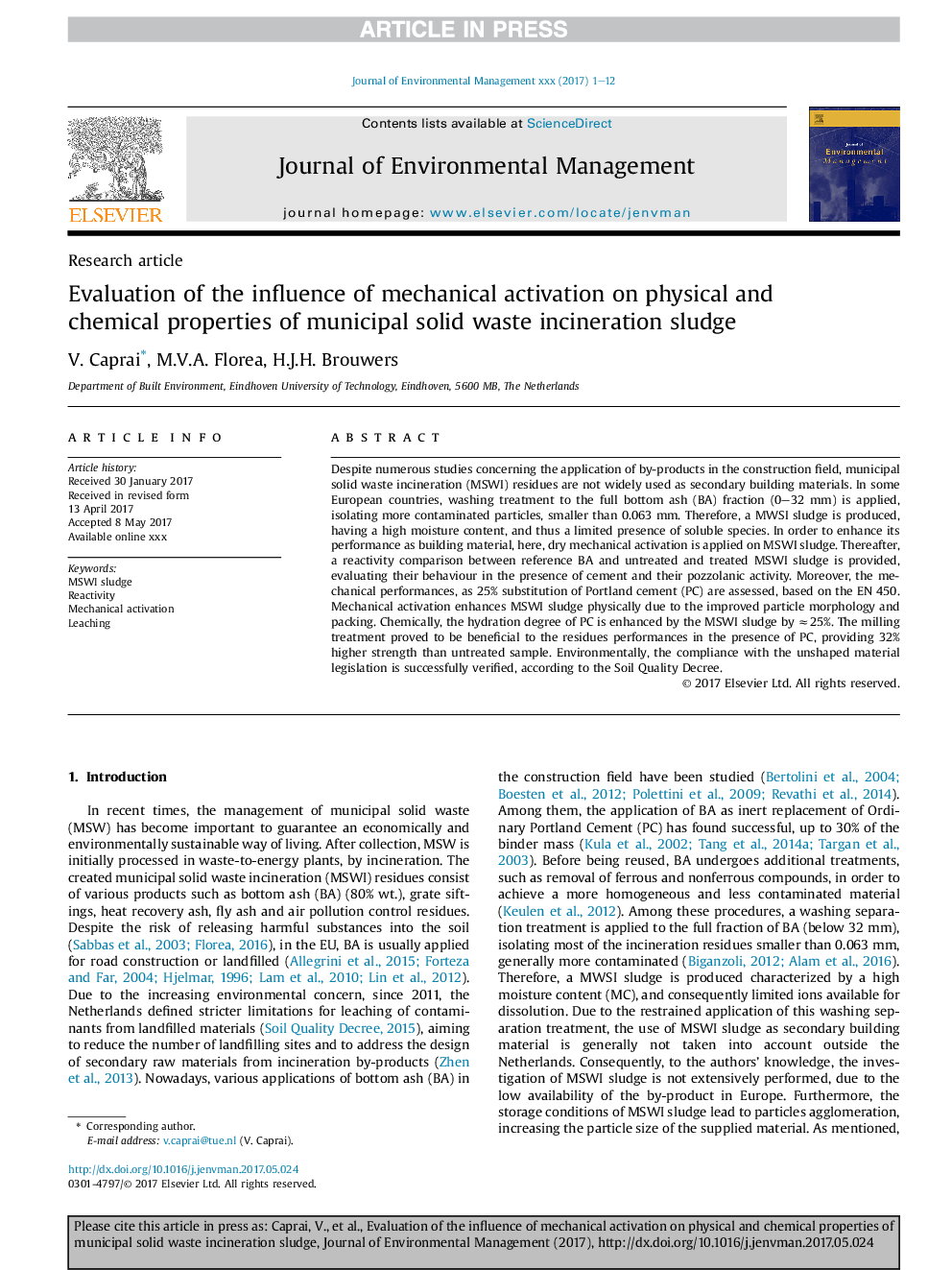| Article ID | Journal | Published Year | Pages | File Type |
|---|---|---|---|---|
| 7477234 | Journal of Environmental Management | 2018 | 12 Pages |
Abstract
Despite numerous studies concerning the application of by-products in the construction field, municipal solid waste incineration (MSWI) residues are not widely used as secondary building materials. In some European countries, washing treatment to the full bottom ash (BA) fraction (0-32Â mm) is applied, isolating more contaminated particles, smaller than 0.063Â mm. Therefore, a MWSI sludge is produced, having a high moisture content, and thus a limited presence of soluble species. In order to enhance its performance as building material, here, dry mechanical activation is applied on MSWI sludge. Thereafter, a reactivity comparison between reference BA and untreated and treated MSWI sludge is provided, evaluating their behaviour in the presence of cement and their pozzolanic activity. Moreover, the mechanical performances, as 25% substitution of Portland cement (PC) are assessed, based on the EN 450. Mechanical activation enhances MSWI sludge physically due to the improved particle morphology and packing. Chemically, the hydration degree of PC is enhanced by the MSWI sludge by â25%. The milling treatment proved to be beneficial to the residues performances in the presence of PC, providing 32% higher strength than untreated sample. Environmentally, the compliance with the unshaped material legislation is successfully verified, according to the Soil Quality Decree.
Related Topics
Physical Sciences and Engineering
Energy
Renewable Energy, Sustainability and the Environment
Authors
V. Caprai, M.V.A. Florea, H.J.H. Brouwers,
